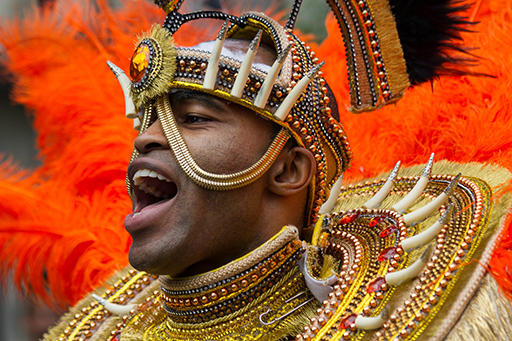2.2.2 Experienced space
Spaces are produced by our everyday interactions and actions within them – the ways in which we move through the streets, stop to socialise, sell, work, and so on. Although these patterns of everyday life can be influenced by the way in which a space is conceived, they can never be fully controlled, meaning that people’s practices can radically change the nature of space.
In reality, space can take on a life of its own. Leadership activity in a space can reproduce it through experience. Black people in the UK have long understood the importance of reproducing space as experienced space, thereby creating spaces where various Black communities can celebrate their diverse cultures and socialise without fear of persecution. Black people have also long reproduced space in experienced ways to reduce barriers between different communities and to celebrate diversity – the Notting Hill Carnival is a perfect example of this.

The downside to the creation of vibrant, experienced space by Black communities is that these can become targets for profit-making, particularly from real estate developers. Brixton, in South London, is a salient example. It is an area made vibrant through the influence of diverse Black cultures, but one that is increasingly unaffordable due to ‘gentrification on steroids’ (Byrne, 2022). It is an irony of experienced space that developers target authentic cultures to leverage profit – they are parasitic upon the creativity of local people. These exploitable resources are made into ‘special marks of distinction’ (Harvey, 2019b, p. 110) by those who seek to profit from others’ cultural practices. In fact, the edgier and more non-conformist the marks of distinction, the better. Hence, cities become celebrated because of the creativity and intellect of Black people, and are then monetised by real estate developers and business interests. As a result, rents and property prices spike, forcing people out of communities that only became desirable in the first place because of the cultural practices of Black people.
This is a process known as ‘gentrification’ (Kern, 2022). It is impossible to dissociate gentrification from a broader tendency in contemporary societies for housing to become commodified – that is to say, treated as investments for profit rather than as homes. In such systems, each and every facet of community life is approached as a potential source of profit, and the result is the entrenchment of inequalities. Vibrant forms of leadership have risen up in opposition to gentrification around the world. These campaigns involve not only resisting the creep of gentrification, but also envisaging what alternative community spaces may look like (Wellington, 2019), and the values and practices that can be established in design.
